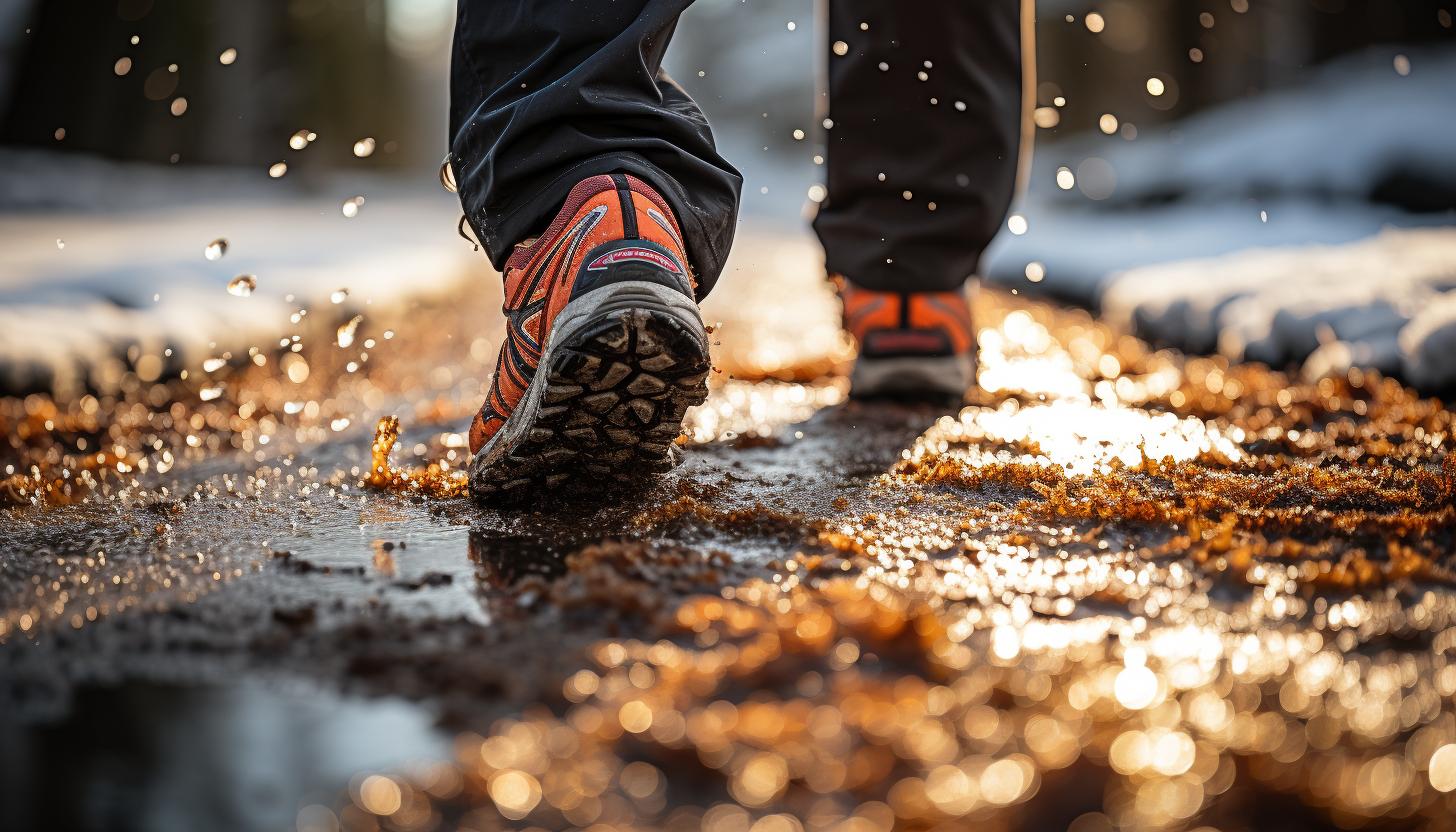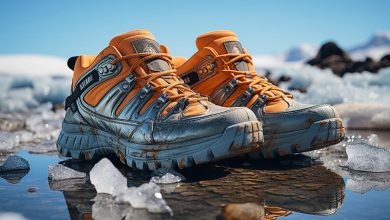Running in Snow: Tips for Safe and Enjoyable Winter Runs

Are you ready to take your winter runs to the next level? Running in snow can be a thrilling and invigorating experience, but it also comes with its own set of challenges.
Don’t worry though, because we’ve got you covered with all the tips and tricks you need for safe and enjoyable winter runs. From essential gear to preparing your body for cold weather, we’ll guide you every step of the way.
So lace up your shoes and get ready to conquer those snowy trails!
Essential Gear for Winter Running

Before heading out for a winter run, it’s important to have the essential gear on hand. Layering techniques for warmth and choosing the right shoes for snowy conditions are two key aspects to consider when preparing yourself.
Layering is crucial to regulate your body temperature and protect you from the cold weather. Start with a moisture-wicking base layer that will keep sweat away from your skin. Then add an insulating middle layer, such as a fleece or down jacket, to trap heat close to your body. Finally, top it off with a waterproof and windproof outer layer to shield you from snow and gusts of wind.
When it comes to footwear, selecting the right shoes is vital for traction and stability on snowy terrains. Look for running shoes with good grip and tread patterns that work well in icy conditions. Some brands even offer specialized winter running shoes with built-in spikes or studs for added traction.
Having the proper gear ensures that you stay warm, dry, and comfortable during your winter runs. Now that you’re equipped with the necessary knowledge about layering techniques and shoe selection, let’s move on to preparing your body for cold weather runs.
Transition: Once you have all your gear sorted out, it’s time to focus on getting your body ready for those chilly outdoor workouts.
Preparing Your Body for Cold Weather Runs

Make sure you’re properly warmed up and hydrated to get the most out of your cold weather runs. Running in the winter requires a little extra preparation to keep your body comfortable and prevent injuries. Before heading out, take some time to do warming exercises that will increase blood flow and loosen up your muscles. Dynamic stretches like leg swings, high knees, and arm circles are great options. These exercises will help improve your flexibility and reduce the risk of strains or sprains.
Layering clothing is essential when running in cold weather. Start with a moisture-wicking base layer that will keep sweat away from your skin and help regulate your body temperature. Add an insulating middle layer made of fleece or wool to trap heat while still allowing for breathability. Finally, top it off with a windproof and waterproof outer layer to protect you from the elements.
Safety Tips for Running on Snowy and Icy Surfaces

To stay safe while running on snowy and icy surfaces, you should wear shoes with good traction to prevent slips and falls. The right footwear can make all the difference in maintaining stability and confidence during your winter runs.
Here are three key factors to consider when choosing the right shoes:
1. Tread design: Look for shoes with deep lugs or multidirectional patterns on the outsole. These provide excellent grip on slippery surfaces, helping you maintain control and avoid accidents.
2. Waterproofing: Opt for shoes with a waterproof upper or a water-resistant coating. This will keep your feet dry and protected from cold, wet conditions, ensuring a more comfortable run.
3. Flexibility: Choose shoes that offer flexibility in the sole and upper materials. This will allow your feet to move naturally while adapting to varying terrain, enhancing your running technique even in challenging winter conditions.
By selecting footwear that addresses these aspects, you can enjoy safer and more enjoyable winter runs without compromising performance. Remember to also adjust your running technique by taking shorter strides, keeping your body weight slightly forward, and being cautious of black ice or hidden hazards along your route.
Stay prepared and focused, so you can fully embrace the beauty of running in snowy landscapes while minimizing any risks involved.
Maintaining Proper Hydration and Nutrition in Cold Conditions

Staying properly hydrated and nourished is essential when exercising in cold conditions. Cold weather can pose hydration challenges as the body may not feel as thirsty compared to warmer temperatures. However, it is important to remember that even in colder climates, your body still requires fluids to function optimally.
To combat this challenge, make sure to drink water before, during, and after your winter runs. Aim for at least 8-10 glasses of water per day to stay adequately hydrated.
In addition to staying hydrated, fueling your body with energy-rich snacks is crucial for maintaining energy levels during cold weather workouts. When exercising in the cold, your body burns more calories to keep warm. Including snacks such as bananas, trail mix, or granola bars can provide a quick boost of carbohydrates and proteins needed for sustained energy.
Remember that proper hydration and nutrition are vital components of any exercise routine but become even more critical when exercising in cold conditions. By being mindful of these factors and incorporating them into your winter running routine, you can ensure a safe and enjoyable experience while keeping yourself energized throughout the workout.
Post-Run Recovery and Care in Winter Weather

After your winter run, it’s important to prioritize post-run recovery and take care of your body in the cold weather. The frigid temperatures can increase the risk of winter running injuries and make it crucial to prevent frostbite.
Here are three key steps you should follow for a safe and effective post-run recovery:
1. Warm up gradually: As tempting as it may be to rush indoors after a chilly run, avoid sudden temperature changes. Instead, take a few minutes to cool down by walking or jogging slowly before entering a warm environment. This will help regulate your body temperature and reduce the chances of hypothermia.
2. Dress appropriately: Layering is essential when running in cold conditions, but don’t forget about post-run attire. Change into dry clothes immediately after your run to avoid prolonged exposure to sweat-soaked clothing that can lead to chills and potential frostbite.
3. Hydrate and nourish: Replenishing fluids and nutrients lost during your run is vital for optimal recovery. Drink plenty of water or electrolyte-rich beverages, such as sports drinks or coconut water, to stay hydrated. Additionally, consume a balanced post-workout meal containing carbohydrates for energy replenishment and protein for muscle repair.
Conclusion
In conclusion, winter running can be a challenging yet invigorating experience. By following these tips and equipping yourself with the right gear, you will be well-prepared to tackle snowy and icy surfaces.
Remember to listen to your body, stay hydrated, and fuel properly to maintain optimal performance in cold conditions. And when it comes to post-run recovery, don’t let the frosty weather freeze your progress – take care of yourself and give your body the warmth and rest it needs.
So lace up those shoes, hit the trails, and embrace the beauty of running in the snow – after all, a little cold never hurt anyone!






